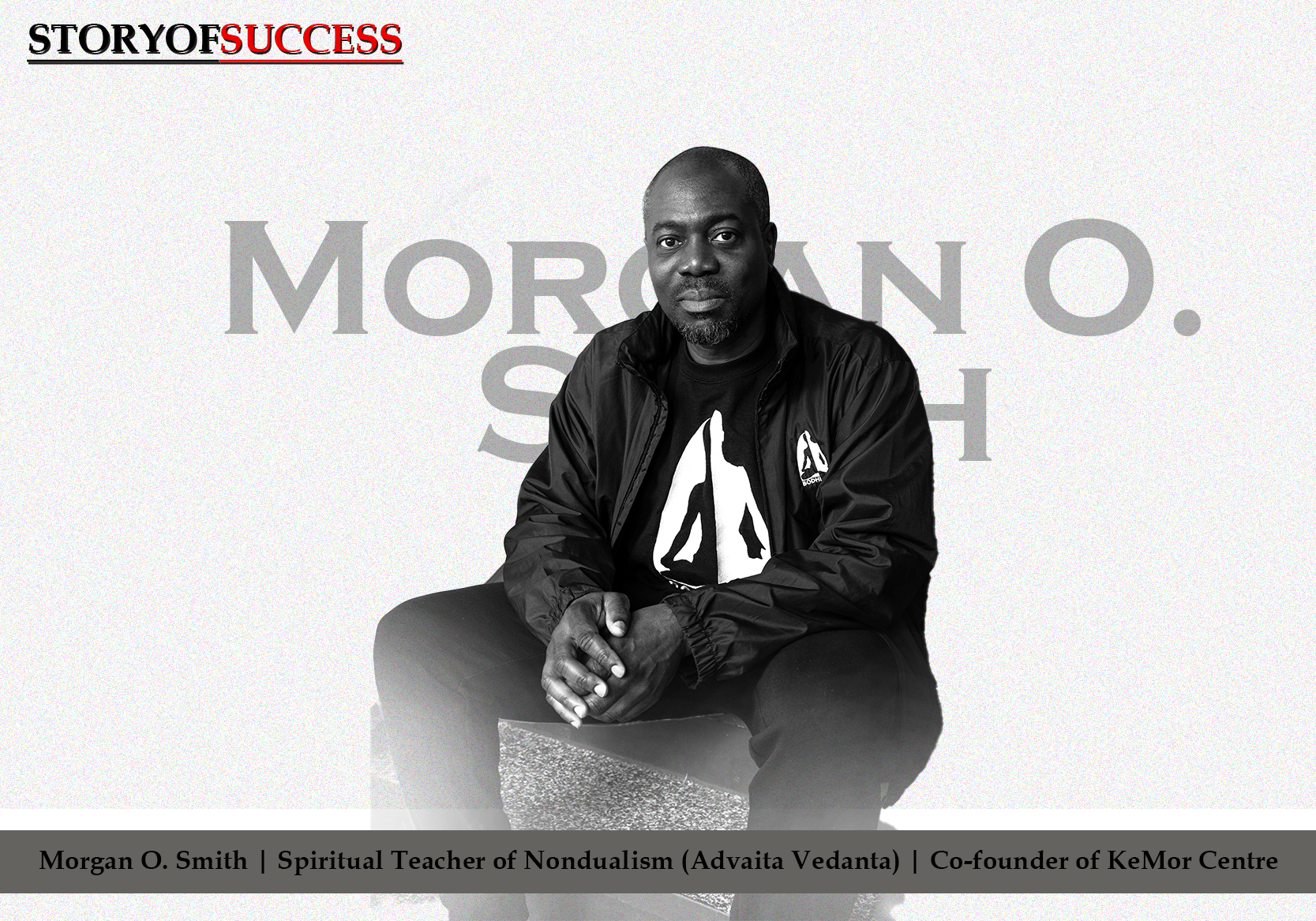
Top Spiritual Visionaries Spreading the Light of Nonduality in 2025

Morgan O. Smith’s Journey Into Nondualism
For Morgan O. Smith, the path toward Nondualism wasn’t something meticulously planned or consciously pursued. It emerged organically, quietly revealing itself through years of dedicated meditation and deep inner work.
The shift began after a profound spiritual awakening in 2008—a moment that would later become a turning point in Morgan’s journey. At the time, the word Nondualism wasn’t even in his vocabulary. There was no intellectual framework, no formal label—only a felt sense of unity and presence that surpassed the boundaries of ordinary perception.
Years later, Morgan came across a post on a nondual community blog—almost by chance. “I wasn’t familiar with the term,” he recalls. “But as I read through it, I immediately recognized what it was pointing to. It wasn’t something new being introduced to me, but rather something I had already known within myself, now reflected in words.”
This recognition was more than an intellectual understanding—it was a validation of Morgan’s own direct experience. It was as if the written word had finally caught up to the truth he had lived and breathed for years.
Morgan’s story reminds us that awakening doesn’t always come through books, teachers, or formal practices. Sometimes, it unfolds quietly—like a seed long planted, blooming when the conditions are just right. Nondualism, in this light, isn’t a philosophy to adopt, but a reality to be uncovered—one that lives at the heart of who we already are.
The Moment of Oneness: Morgan Smith’s Awakening to the Seamless Field of Being
In 2008, while in solitude, Morgan Smith experienced something that would forever change the way he saw the world—and himself. It wasn’t something read in a book or explained by a teacher. It was a direct, life-altering realization that pierced through all mental concepts and dissolved the illusion of separation.
In that sacred moment, Morgan felt the boundaries between himself and the world fall away. “There was no longer a ‘me’ looking out at ‘it,’” he reflects. “I experienced a profound realization of non-separation between myself and the Ultimate Self—a God-Head that was one with everything.”
This wasn’t an idea or belief. It wasn’t an intellectual insight. It was a living truth. His eyes were open, and yet everything he saw shimmered with the same luminous presence. “I didn’t see things as Morgan. I saw them as the Pure Witness. There was no division between the observer and the observed.”
What unfolded was not a vision of something new, but a revelation of what had always been: a seamless field of Being, where everything was interconnected, illuminated, and alive with the same essence.
Morgan’s story is a reminder that the doorway to truth doesn’t always swing open with effort. Sometimes, it opens in stillness. In silence. In surrender. And when it does, we realize we’ve never been apart from the Divine—we’ve only believed we were.
Guided by Grace: The Teachers Who Deepened Morgan Smith’s Awakening
Morgan Smith’s spiritual journey began with a spontaneous awakening—an inner revelation that emerged from silence, not study. Yet, as the path unfolded, certain teachers and teachings arrived like sacred signposts, deepening what had already been realized.
Before his awakening, Morgan found inspiration in the teachings of the late Bill Harris and the stirring words of Osho, which opened inner doors and sparked deeper inquiry. Years later, Ken Wilber’s Integral Theory added a multidimensional framework that brought clarity and context to his evolving experience.
From practicing kundalini yoga with Krishna Kaur, attending courses led by Sadhguru, to receiving darshan from Paramahamsa Sri Swami Vishwananda, each step brought fresh illumination. A particularly meaningful encounter came in 2012, when Morgan saw Adyashanti in person—an experience that left a lasting imprint.
Although his awakening was self-arising, a turning point came in 2019 after meeting Vishwananda. “Something in that connection marked a significant shift,” Morgan shares. “In the months that followed, my life underwent a profound transformation—one that deepened and expanded everything I had previously realized.”
From virtual meditations with Andrew Cohen to the timeless wisdom of Sri Ramana Maharshi, Nisargadatta Maharaj, and Papaji, Morgan’s path reveals a beautiful truth: the journey of awakening may begin alone, but along the way, grace brings the right guides at just the right time.
Morgan Smith on the Living Truth of Nonduality
To Morgan Smith, Nondualism is more than a philosophy—it’s a movement, a global awakening rooted in direct experience rather than inherited belief or rigid ideology. It transcends tradition, pointing to a universal truth that has echoed across cultures and centuries.
“Nonduality,” Morgan explains, “is the recognition that all is One Reality. There are no true distinctions—between self and other, subject and object, existence and non-existence. It’s the One appearing as many, the formless dancing in form.”
While Nondualism may be discussed as a spiritual teaching or belief system, Morgan emphasizes that the Suchness it points to is not conceptual. It is a direct, lived realization—the undeniable knowing that all perceived separation is a construct of the mind.
In this awakening, there is no inside or outside, no me or you—only undivided, boundless Being. Always here. Always whole. Always untouched by thought.
Morgan’s insight reminds us that Nonduality isn’t something to be understood—it’s something to be remembered. It is not the destination but the very ground we’ve never left.
Morgan Smith on the End of Seeking
Many spiritual paths are built upon the idea of reaching something—union with God, enlightenment, liberation, or higher states of consciousness. Even those who identify as non-dualists often find themselves seeking. But as Morgan Smith shares, being familiar with nondual teachings is not the same as the direct realization of Nonduality itself.
“Nondualism, as a philosophy, has a beginning and an end,” Morgan says. “But true Nonduality—the living realization—has neither. It begins and ends with what is already present. The start is the end. The end is the start. Both are the same.”
In that light, Nonduality isn’t a path of becoming—it’s a path of remembering. Not about attaining something in the future, but seeing clearly what has always been true. “To seek God traditionally is to look outside yourself, or deep within. But when it’s realized that there is nothing to seek—and no seeker—then liberation is not a distant goal. It’s the truth of what you’ve always been.”
Morgan’s insight points to a radical yet gentle truth: you are not on your way to wholeness. You are wholeness. The journey ends where it begins—right here, right now.
You Are the Truth: Morgan Smith on the Unveiling of Nonduality
In the language of the world, we speak of experiencing truth—but in Nonduality, even that word falls short. As Morgan Smith so clearly puts it, “You cannot stand outside of truth to experience it—because you are it.”
In the realm of the Nondual, there is no separation between experiencer and experienced. “Direct experience” here does not point to something external or new, but to what simply is—the raw, unfiltered reality before thought, before labeling, before the mind intervenes.
To guide others toward this timeless realization, Morgan points inward—not to thoughts or emotions, but to the very source of awareness. The question “Who am I?” becomes more than a practice—it becomes a doorway. In resting with that question, without chasing an answer, the illusion of separation begins to dissolve.
This process isn’t always easy. For many, it takes years of honest inquiry and deep surrender. But when all seeking fades, and one no longer grasps for meaning or outcome, something remarkable happens: what has always been there—pure presence, undivided Being—quietly reveals itself.
Morgan reminds us: you don’t need to attain truth. You are the truth. And in letting go, you finally see what was never hidden.
The Grace in the Struggle: Morgan Smith on Surrender and the Illusion of Self
For Morgan Smith, guiding others on the spiritual path doesn’t mean offering an escape from struggle—it means honoring it as part of the unfolding. “There’s nothing for me to guide anyone through,” he says, “because the struggle itself is part of the process. It continues until the ego, in its own time, loosens its grip or simply exhausts itself.”
This tension, far from being a misstep, is sacred. It’s how the illusion of separation begins to unravel.
Even after the peak realization of “no self,” Morgan reminds us, life doesn’t stop. The body-mind still moves, loves, laughs, and works. The difference lies in identification: there is no longer a sense of being the doer. “Life continues,” he says, “but without the weight of personal ownership.”
Everything becomes a dance within Consciousness. Actions happen, but not from a separate “me.” Thoughts arise, but they are no longer held as mine. The individual remains, but only as a passing wave in the infinite ocean of Being.
Morgan’s words are a gentle reminder: the journey is not about escaping the human experience—it’s about seeing it clearly, without clinging. In that seeing, the struggle loses its sting, and what remains is freedom without fanfare—simple, quiet, and profoundly alive.
Not-Two: Morgan Smith on the Illusion of Distinction
To Morgan Smith, the lines we draw between Awareness, Consciousness, and the Absolute are, in the end, imagined. “It’s only the so-called separate self—the mind—that tries to divide, analyze, label, and define them,” he shares. “But in truth, there is no real separation.”
In the play of perception, distinctions arise. Awareness is often spoken of as the formless witness—still, silent, untouched. Consciousness appears as its dynamic expression—manifestation in motion, the dance of perception and experience. And the Absolute? That which holds both—and is beyond both.
Yet Morgan reminds us that these are just pointers, not truths. “Even calling it that places it within the limits of language and concept.”
From the mind’s perspective, they appear separate. But in direct experience, they are not-two. There is only a seamless, indivisible Being—whole and self-knowing, needing no definition, no labels, no lines.
Morgan’s insight invites us to rest in what precedes thought—to stop trying to divide the ocean into waves, and simply be the ocean.
Beyond the Practice
From Morgan Smith’s perspective, awakening to Nonduality isn’t the result of any spiritual technique. Meditation, prayer, devotion—these are tools that may shape the storyline, but they do not cause realization. “In truth,” he says, “none of these practices cause the realization of Nonduality. When it dawns, it’s seen that nothing truly brought it about.”
Prayer begs the question—who is praying, and to whom? Devotion implies a divide between devotee and the divine. Even meditation, though often seen as a key practice, cannot manufacture awakening. “It is grace,” Morgan affirms. “It is spontaneous.”
He doesn’t dismiss these tools. Quite the opposite—they have value, especially in the early stages of the path. They quiet the mind, soften the ego, and turn attention inward. But he’s clear: “Awakening is never earned. It’s not the outcome of effort—it is the recognition of what has always been.”
In the light of Nondual awareness, there is no linear journey. Cause and effect, action and inaction—all dissolve into one seamless unfolding. “You were never born, and you cannot die—it only appears so from the perspective of the mind.”
What Morgan offers is a radical and freeing insight: the Self is not something to be attained. It is what is—and it reveals itself, not by effort, but by the falling away of everything that obscures it.
The End of the Sufferer: Morgan Smith on Nonduality and Emotional Freedom
According to Morgan Smith, Nondualism doesn’t deny suffering—it simply sees it differently. “Suffering arises from identification with the ego,” he explains. “But when there’s awareness of that identification, everything changes.”
Rather than being someone who suffers, one becomes the witness to suffering. Emotions still arise—anger, sadness, fear—but without the weight of personal ownership. “They move through like passing clouds,” Morgan says. “They’re felt fully, but not clung to.”
In Nondual awareness, the “sufferer” dissolves. The pain of life may still appear, but the psychological burden—the suffering born from separation—falls away. There’s no one left to carry it.
This isn’t about bypassing or numbing emotion. It’s about clear seeing. “Freedom doesn’t come through avoidance,” Morgan shares. “It comes through the recognition that the ‘one who suffers’ was never real to begin with.”
Here, in this spacious witnessing, true liberation begins—not from pain itself, but from the illusion that you are the pain.
Living as Life Itself: Morgan Smith on the Effortless Flow of Nondual Awareness
Morgan Smith offers a profound reminder: if you feel the need to “integrate” Nondual awareness, it may not yet be fully realized.
“True Nondual awareness isn’t something you apply or practice,” he explains. “When awakening happens, integration isn’t a doing—it’s a natural unfolding.”
There’s no checklist, no effort to become more aware. Instead, life flows—relationships, work, conversations—yet now all of it is seen from the stillness of pure Being.
“You begin to listen more deeply, react less automatically, and love more freely,” Morgan shares. “It’s not about detachment—it’s about intimacy with what is.”
This shift isn’t about withdrawing from life—it’s about dissolving into it. Not as a separate self trying to live, but as life itself, aware of its own unfolding.
Beyond Understanding: Morgan Smith on Letting Go into Presence
For Morgan Smith, the essence of Nonduality isn’t found in intellectual understanding—it’s found in letting go.
“Understanding Nonduality on a philosophical level can be engaging, even inspiring,” he shares. “But it’s not the realization itself.”
Morgan encourages seekers to go beyond the need to grasp or define. “Let go—even of Nondual concepts and teachings,” he says. “Return to direct experience. Rest in the space where there’s nothing to grasp, nothing to figure out.”
The key lies in recognizing that the sense of separation is only a thought—and without belief in that thought, it begins to dissolve. What remains is simple and profound: pure, undivided presence.
In that letting go, the truth reveals itself—not through effort or intellect, but through the stillness of simply being.
The Lightness of Being: Morgan Smith on Responsibility Without Ego
For Morgan Smith, the realization of Nonduality doesn’t erase life’s responsibilities—it transforms the way they’re held.
“On the surface, it still appears that I make decisions and take responsibility,” he says. “But what shifts is the identity behind those actions.”
From the lens of Nondual awareness, every moment unfolds exactly as it should—even apparent imperfections carry a hidden harmony. Decisions still happen, but without the inner friction that comes from egoic control. “There is a deep knowing,” Morgan explains, “that all action is a movement of the whole—not the doing of a separate individual.”
Responsibility is no longer a burden—it’s embraced fully, but without the illusion of personal ownership. Action flows spontaneously, like a river finding its way. “One becomes a clear, open vessel through which intelligence moves,” he says. “There’s a lightness, even in serious matters, because the weight of personal doership has dissolved.”
In that space, responsibility isn’t something carried—it simply is. Free, flowing, and whole.
Tools Within the Dream: Morgan Smith on the Illusory Path to Awakening
From the ego’s viewpoint—the sense of being a separate self—spiritual practices like meditation or brainwave entrainment often arise as tools for inner peace. For Morgan Smith, these were once helpful in turning awareness inward. But with deeper realization came the understanding that even these tools are part of the illusion.
“They serve the illusion,” Morgan reflects, “yet they serve it well.” Though they don’t dissolve the illusion directly—since they too belong to the dream—they can soften its edges. “Illusory methods still serve illusory bodies and minds,” he says. “And within the dream, a story of awakening may feel far more liberating than one in which it never seems to happen at all.”
Ultimately, he reminds us, there was never separation to begin with. The illusion appears to fall away only because it was never real. But on the apparent path, meditation, inquiry, and silence can ready the ground. And then, without cause or effort, realization may dawn: no one was ever separate. No path was ever needed.
Only Being remains.
The Sacred Ordinary: Morgan Smith on Enlightenment and Everyday Life
To Morgan Smith, the idea that enlightenment and ordinary life are separate is the greatest illusion of all. “There is no real difference,” he says. “They are the same.” What we often dismiss as mundane only appears that way because it’s filtered through the lens of duality—a mental division between sacred and profane, spiritual and worldly.
“Enlightenment,” Morgan shares, “is not a special state or rare event. It is the simple, direct recognition that this—whatever is appearing right now—is already That.” In this seeing, the ordinary is revealed as deeply sacred. The laundry, the laughter, the stillness, the sorrow—every fragment of life reflects the whole.
There is no “other world” to reach, no higher plane to attain. When the veil of separation lifts, what remains is life, just as it is—undivided, perfect, free.
And in that realization, the extraordinary is found in the utterly ordinary.
Beyond Belief: Morgan Smith on the Misunderstandings of Nonduality
A common misconception, Morgan Smith observes, is that Nondualism is just another philosophy or belief system. “And in a way, it’s become that,” he notes—particularly in how it’s studied, discussed, and passed along. But true Nonduality is something far more immediate and ungraspable. “It’s not something that can be conceptualized or believed in,” Morgan says. “It is what is—beyond all interpretation.”
Another misunderstanding is that Nonduality denies the world, emotions, or personal experience. That, Morgan clarifies, isn’t Nonduality—it’s spiritual bypassing. “True Nonduality denies nothing. It reveals the essence within all experience, not apart from it.”
Many also mistake detachment for apathy. But Morgan insists that Nonduality is not a cold distance from life—it is the intimacy of life itself. “It holds both joy and sorrow, form and formlessness, without clinging to either,” he says. “It’s not about withdrawal, but about the clear seeing that the world and the Self are not two.”
In the end, Nonduality is not about escaping life—it’s about recognizing that life is already whole
Presence in Motion: The Freedom Beyond Ego
At the moment of true realization, the ego doesn’t evolve—it dissolves. What remains is not a void or passivity, but Presence—alive, vibrant, and whole. And within that Presence exists the full spectrum: action and stillness, intimacy and detachment.
Morgan Smith reminds us that from this spacious awareness, life doesn’t stop—it deepens. “Action becomes more fluid, natural, and aligned,” he says. It no longer stems from fear or the drive to become someone. Instead, it flows effortlessly from the wholeness of Being.
Detachment, often misunderstood, isn’t about retreat. It’s freedom—freedom from stories, reactivity, and personal agendas. It’s not disengagement; it’s clarity. In this space, life lives itself through you—spontaneous, open, and untouched by the weight of ego.
This is not the end of life, Morgan tells us—it’s the beginning of living it fully.
Beyond Belief: The Living Truth of Nonduality
To the uninitiated, Nondualism can seem like just another spiritual philosophy—an abstract idea, a belief among many. But for those who’ve seen through the illusion of separation, it ceases to be a belief at all. As Morgan Smith shares, “I no longer believe in Nonduality—I know, without a shadow of a doubt, that all is Nondual. One total singularity. And I am That.”
Belief is a function of the mind—shifting, uncertain, conceptual. But Nonduality points beyond the mind, beyond thought, to the groundless ground of pure Awareness. It cannot be believed into existence because it is existence.
Morgan doesn’t ask for belief—he offers an invitation: What is aware of this moment? In turning inward, in resting in that awareness which precedes every thought and interpretation, one touches the living truth. It was never missing. It never required belief.
Because what is real… simply is.
Waves on the Ocean: The Power of Nonduality in a Driven World
Nonduality doesn’t erase individuality—it reveals its true nature. What we call personal success, ambition, or identity are like waves rising and falling on the vast ocean of Being. They’re not denied or dismissed—they’re embraced, seen clearly as inseparable from the whole.
In a culture fueled by comparison and constant striving, Nondual understanding offers a quiet revolution. It reminds us that beneath every wave of doing lies the stillness of Being. It’s not about rejecting achievement, but seeing that all action arises from—and returns to—wholeness.
Morgan Smith puts it plainly: Nonduality isn’t about escaping life. It’s about meeting life with presence, rooted in what’s unchanging. This presence brings sanity in chaos, peace in pressure, and compassion in competition.
Far from irrelevant, Nonduality may be the most vital understanding of all—one that lets us live fully, freely, and fearlessly in a fragmented world.
One Truth, Many Doors: Nonduality and the Heart of Religion
Nonduality isn’t at odds with religion—it lives quietly at the heart of it.
When a Christian proclaims, “Everything is God,” or a Sufi whispers, “Allah is the only reality,” they’re not making poetic gestures—they’re pointing to the very same truth that Nonduality reveals: there is only one undivided presence, expressing itself as all that is.
Every authentic spiritual path, when followed to its depths, dissolves into the same ocean. Beneath the forms of doctrine and ritual lies a single current of truth—timeless, formless, and free. Nonduality doesn’t reject religion; it simply sees through its surface into its essence.
True devotion, real surrender, and heartfelt love for God—when born of direct experience—are not separate from Nonduality. They are its fragrance.
In this way, Nonduality doesn’t divide—it unites. Not by blending beliefs, but by revealing the ever-present unity behind them all.
One Spark Is Enough: Sharing Nonduality Without a Mission
Nonduality isn’t something to be preached—it’s something that reveals itself, silently, when the time is right.
For Morgan Smith, sharing isn’t about teaching in the traditional sense. There’s no agenda, no strategy, no effort to convert or convince. Words are offered only when they arise naturally—an expression of the present moment, not a performance or persuasion.
If the message resonates with someone, it’s a quiet blessing. If not, that’s okay too. Because Nonduality isn’t about numbers or followers. It’s about truth recognizing itself in any form, in any moment.
Even if one person is touched by it, that’s more than enough. Because in that one, the whole is seen. The totality, the essence of all things, is alive and present. Nothing more is needed.
This is not a mission—it’s a movement of being. Simple. Effortless. Whole.
Grace Needs No Teacher: Awakening Beyond Cause
From the highest view, there is no awakening and no one to awaken—because the separate self was never real to begin with. And yet, within the play of time and space, the story of awakening unfolds in countless ways.
Some appear to awaken in the presence of a teacher. Others experience a spontaneous realization, seemingly from nowhere. But whether the path winds through teachings or solitude, the essence remains unchanged: it is always the Self recognizing itself.
No teacher truly causes awakening. No practice guarantees it. The event is not the result of effort, nor the gift of another. It is grace—silent, sudden, and causeless. It arrives in the perfect form for each unfolding story, but always for no one in particular.
The teacher, like the path, is part of the dream. And yet, what is realized is the end of dreaming—the revelation that you have always been That.
The Silence Before All Sound: Knowing Through Stillness
Silence and stillness are not practices to be mastered—they are your true nature. Not the silence of absence, but the radiant presence from which all sound arises. Not stillness as inaction, but the unmoving essence within all movement.
This is the sacred ground pointed to by the ancient vibration of AUM—the resonance of creation itself, born from silence and dissolving back into it. It is the stillness before thought, before form, before identity. It is the space of pure potential—the source of the possible and impossible, the probable and the improbable.
This silence does not speak because there is nothing outside it to speak to. It is one, whole, without a second. It holds everything, includes everything, and is never touched by anything.
In this stillness, Nonduality is not a philosophy or idea. It is known—directly, wordlessly, as the very fabric of being.
From Head to Heart: The Quiet Shift of True Awakening
Awakening rarely arrives all at once. More often, it unfolds gradually—like sunlight moving across a landscape—illuminating some places while others remain in shadow. It’s common for certain aspects of the self to awaken while others still linger in the conceptual fog of understanding.
True Nondual realization isn’t an idea—it’s a living presence. You can often sense where awakening has yet to fully land: the concepts may be grasped intellectually, but if peace and spaciousness haven’t permeated those areas, suffering persists.
The deepening of awakening isn’t about knowing more—it’s about knowing differently. It’s the shift from mind to heart, from grasping to resting. The personal “doer” begins to dissolve. Resistance fades. Life flows more naturally.
Everything may look the same on the outside, but on the inside, everything changes. The world is no longer something separate to navigate—it’s something you are, intimately and effortlessly.
The Unspeakable Truth: Beyond Words, Into Being
The greatest paradox of sharing Nonduality is this: it cannot truly be spoken. Language, our primary tool for communication, is built on separation—subject and object, self and other, this and that. But Nonduality points to what is whole, undivided, and already complete.
There is no such thing as a Nondual language—not in words, at least. If one exists, it is life itself: the silent presence of existence, pulsing through every breath, moment, and heartbeat.
When we teach or speak of Nonduality, the real task is not to convey information but to gently point back to what has never been missing. It’s an invitation to look beyond the mind’s grasping, beyond concepts and categories, and to rest in direct experience.
This isn’t about adding more knowledge—it’s about unlearning. About trusting what is here now, without definition or distance. Words may point the way, but the truth they point to is wordless, immediate, and alive.
Everything Changed, and Nothing Did: Living From the Ground of Being
There are some truths too vast for words, yet they echo unmistakably in how we live. For Morgan Smith, the realization of Nondual awareness didn’t create a new self—it revealed the absence of one. Life continues much the same on the surface, yet it’s now seen through a profoundly different lens.
This awareness—constant, effortless, and ever-present—has become the backdrop of every moment. It’s not a state that comes and goes. It is what remains when all else is stripped away.
And from this unshakable knowing flows a life that’s more open, courageous, and creative. Morgan takes more inward risks, challenges the boundaries of emotional vulnerability, and meets the world with a heart made softer, not by effort, but by insight.
In service to others—especially youth, families, and individuals with autism or intellectual disabilities—the illusion of separation continues to dissolve. Biases fall away, replaced by natural empathy and the quiet recognition of Self in all forms.
Chaos still visits, but it’s met with space, not resistance. The old panic no longer holds sway, because the “one” who panicked isn’t at the center anymore. What’s left is presence, stillness, and flow.
So yes—everything changed. But in the deepest way, nothing ever needed to.
You Are the Absolute: Remembering What Was Never Lost
You are not a fragment of the universe—you are its source. Not a character in the story of life, but the awareness in which the story unfolds. The Absolute. The Singularity. The timeless ground of all being.
This truth isn’t something to become—it’s what you already are. Eternal. Infinite. Whole.
The body, the thoughts, the identity—they arise and dissolve like waves on the ocean of your awareness. Beautiful, fleeting, and never truly separate. You are not confined to form or name. You are the formless presence in which all names and forms appear.
There has never been a distance between you and the rest of existence. Separation was always a mirage—believed by the mind, but never real in essence.
To realize this is not to escape the world, but to finally see it as it is: undivided, sacred, alive. And in that seeing, the illusion falls away. What remains is simple, radiant being.
You don’t need to strive toward this truth. You are this truth. Rest in that.
Timeless Truth in a Digital Age: How Technology Is Illuminating Nonduality
In a world shaped by pixels and platforms, the ancient truth of Nonduality is finding fresh ways to be seen.
Thanks to modern technology—social media, livestreams, podcasts, and online communities—Nondual teachings are now reaching hearts and minds across the globe. What once required travel to distant ashrams or rare encounters with awakened teachers is now just a click away.
This isn’t about diluting the message—it’s about widening the reach. While realization itself is beyond all tools and timelines, technology serves as a surprising bridge: one that brings ancient wisdom to modern seekers, no matter where they are.
Digital platforms plant seeds of awakening in places the teachings might never have touched before. A short video, a shared post, a virtual satsang—each can act as a subtle pointer toward the unchanging presence that lies beneath all form.
Nonduality remains what it always has been: simple, immediate, and ever-present. But now, its light is shining through new windows—and the world is listening.
The Ever-Present Invitation: Beyond Evolution, Beyond Time
In an age of growing spiritual awareness and unprecedented access to ancient teachings, it’s tempting to believe that humanity is collectively evolving toward Nonduality. But is that really the case?
According to Morgan Smith, accessibility doesn’t guarantee realization. Information may spread, but the truth of Nonduality isn’t found in books or teachings alone—it must be directly known, lived, and embodied. It’s not about accumulating knowledge, but dissolving the very sense of separation that seeks to “get there.”
Even the idea of evolution—of spiritual progression over time—is rooted in duality. It suggests movement, becoming, a future state. But Nonduality points to what is already and always here. It’s not about evolving into truth, but recognizing that truth has never been absent.
Whether or not humanity shifts as a whole is ultimately beside the point. The invitation to see clearly, to awaken from the dream of separation, is ever-present. It doesn’t wait for progress. It simply is—timeless, intimate, and always available.
No Rush to Awakening: Trusting the Timeless Flow
For those who feel stuck on the spiritual path, the instinct is often to search for the next step, the next practice, the next breakthrough. But from the deeper view of Nonduality, there may be nothing to do—and that’s not a problem.
As Morgan Smith shares, realization unfolds not by force but by grace. If it is meant to happen now, it will. If not, there is no failure. The Absolute does not operate on a timeline. It is already whole, already complete—unaffected by our sense of urgency.
Even the feeling of being “stuck” is part of the divine play. It arises within the same boundless awareness as everything else. Sometimes, what’s needed isn’t movement, but stillness. Not striving, but surrender. To simply stop and rest in what is.
In the grand unfolding of life—across lifetimes if needed—nothing is ever truly lost. The invitation to awaken remains open, timelessly present, and always gentle. There is no rush in eternity.

Recent Post

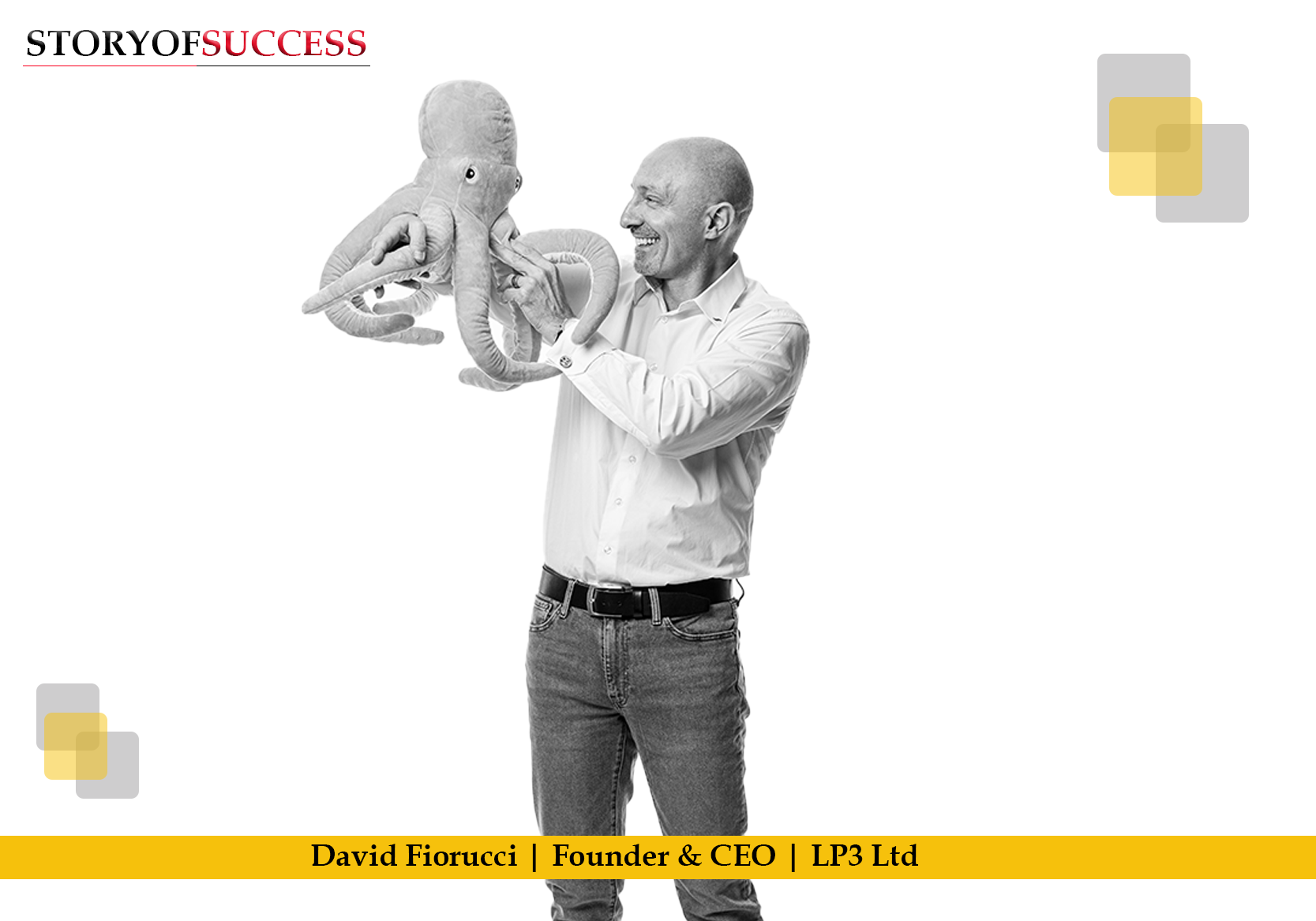
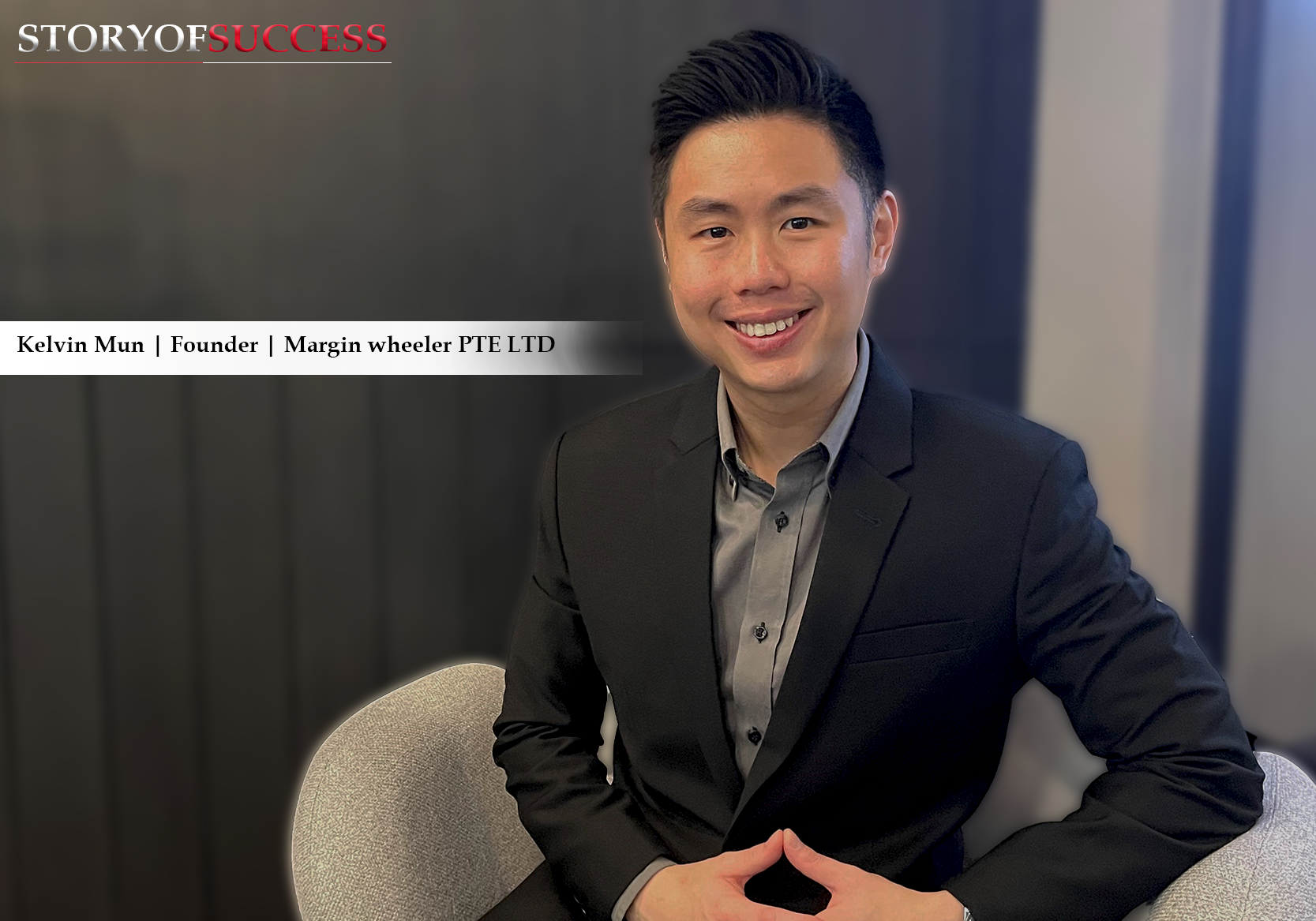
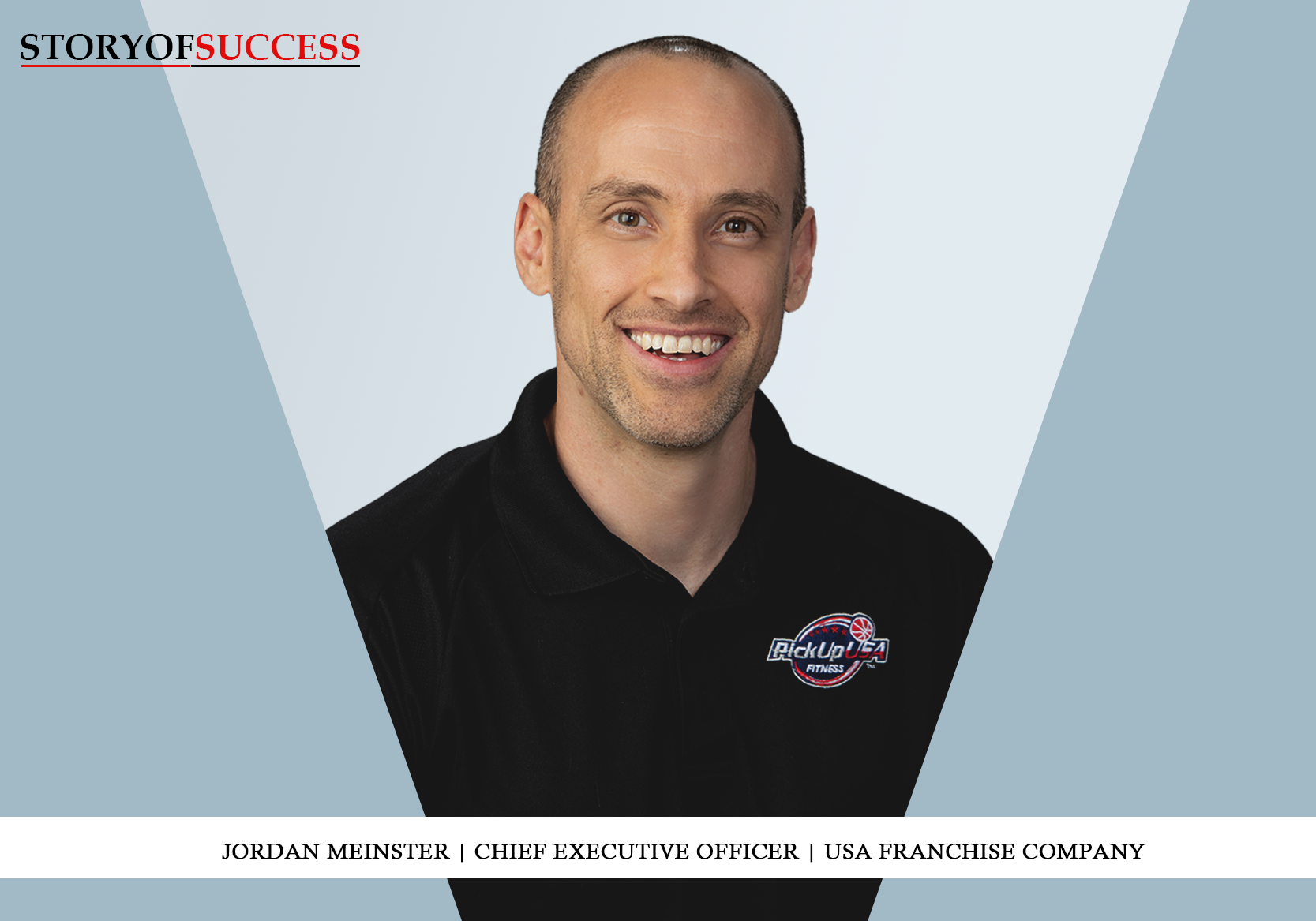
The Top CEOs Who Are Defining a New Era to watch in 2025
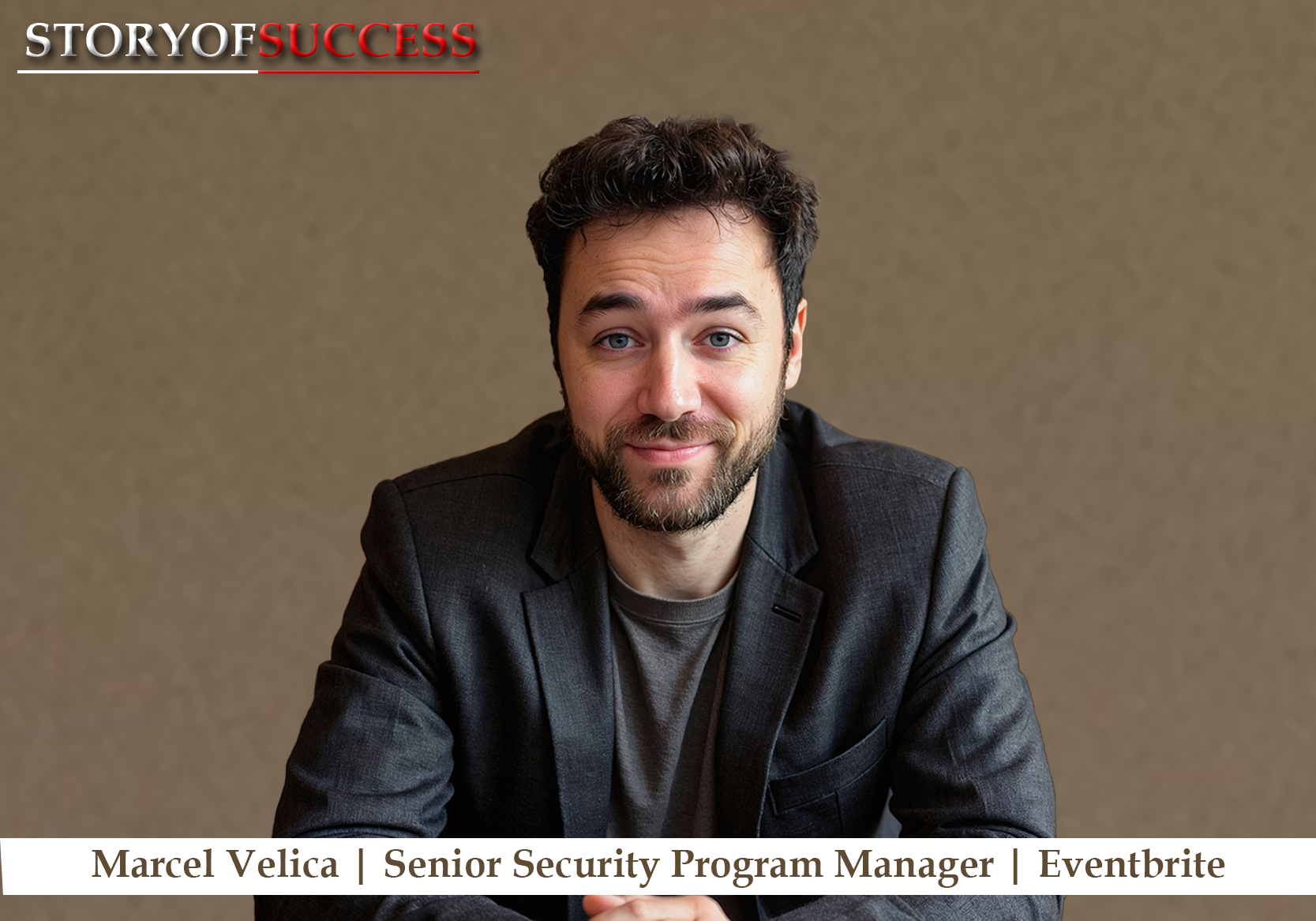
The Top Senior Security Managers Leading 2025
